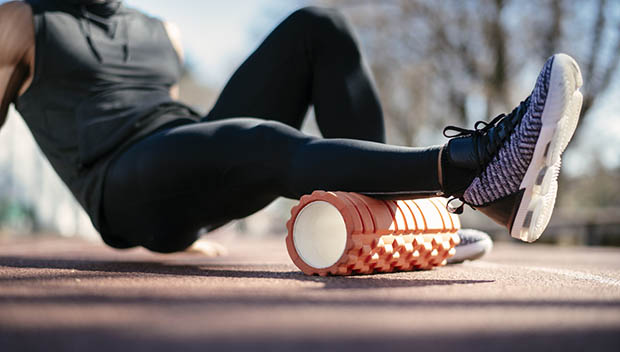
Every runner's dream is to have a standing weekly appointment with a massage therapist for a deep tissue massage. Sounds amazing, right? Reality check. Massages are expensive. Runners need to save their money to buy ALL the shoes, clothing and gear after all.
Thankfully, we have foam rollers as an alternative. Make no mistake, foam rollers are not the same as a good massage. However, they are much more budget friendly, and it's something you can use every day.
Foam rollers are a versatile piece of equipment that are not only great for working out tight muscles post-run but are also the perfect tool for loosening up before pounding the pavement. Researchers aren't exactly sure how the magic of the foam roller happens, but what they do know is that releasing tension improves flexibility and range of motion, which is always a good thing.
Using a foam roller is quite simple. You roll an area of your body back and forth across the top of the roller. Boom. Done! Not so fast. While rolling is simple, it's easy to fall into some bad habits that may cause more harm than good.
Here are four things NOT to do when foam rolling.
You Roll Too Fast
The point of foam rolling is to increase circulation, blood flow, range of motion and flexibility. For the best results, slow your roll with long, gradual strokes to ease out tension and promote relaxation.
You Roll Where You Feel Pain
Our first thought when we feel pain is to try to massage it out. Rather than rolling right on the painful spot, work on the muscles that attach or surround where the pain is located. That's usually the source of the tension.
You Roll in One Direction
Rolling the length of the muscle is good, but your fascia runs in all directions, not just up and down. By maneuvering the area, you are rolling by twisting or turning side to side, hitting up all areas.
You Roll Aggressively
Spending too much time fixating on a knot is not the way to work it out. Aggressive foam rolling may lead to nerve or tissue damage and an even bigger problem. You want a gradual release of the tension, which takes time and patience.
Ideally, you should be using long strokes concentrating on an area for 60 seconds until a tender spot is found. Once a knot is found, maintain pressure on the knot or trigger point for 30 to 60 seconds by moving back and forth over that surface area in different directions. Follow up by performing a stretch for each muscle group you just have rolled to maximize the benefit.
READ THIS NEXT: Foam Rolling Exercises Everyone Should Do


